-
Pools That Need the Least Maintenance
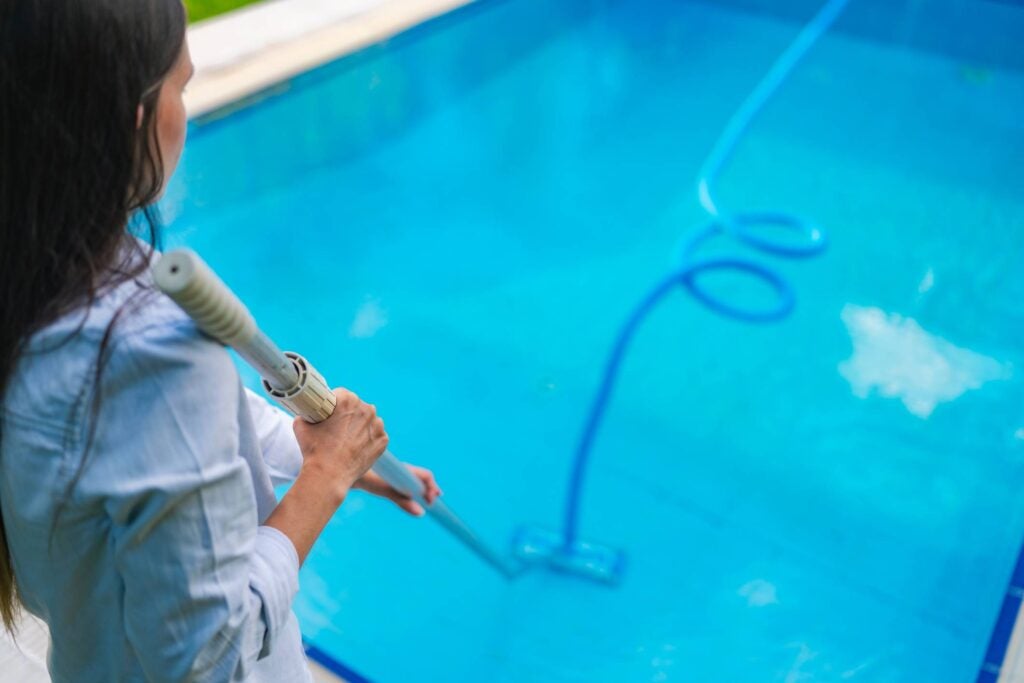
Understanding Low-Maintenance Pools
A swimming pool is a fantastic addition to any home, providing a perfect spot for relaxation and fun. However, the dream of a backyard oasis can quickly be overshadowed by the reality of upkeep. All pools require some level of maintenance, but the material your pool is made from significantly affects how much time and money you’ll spend on it. Understanding these differences is key to choosing the right pool for your lifestyle.
Let’s compare the three main types of in-ground pools, concrete, vinyl liner, and fiberglass, to determine the easiest pool to maintain.
Concrete Pool Maintenance
Concrete pools, while highly customizable in shape and size, are the most demanding for maintenance. The porous nature of their plaster surface creates an ideal environment for algae to grow.
- Frequent Scrubbing: To prevent algae blooms, you should scrub the entire surface of the pool with a steel brush every week.
- Chemical Imbalance: Concrete is alkaline and naturally raises the water’s pH. This means you will constantly be adding acid to maintain the proper water chemistry, making balancing your pool a daily or weekly chore.
- Long-Term Costs: Beyond the regular work, concrete pool maintenance includes significant long-term expenses. The pool must be acid-washed every three to five years. Furthermore, it requires complete resurfacing every 10 to 15 years, a costly and intensive project.
Vinyl Liner Pool Maintenance
Vinyl liner pools fall in the middle of the maintenance spectrum. Their liner is less porous than concrete, which helps to inhibit algae growth. However, they are not entirely maintenance-free.
- Algae Checks: While the surface is mostly smooth, algae can still form along seams and fittings. You will need to perform occasional inspections to catch and treat these spots.
- Liner Durability: Modern vinyl liners are quite durable, but they can be punctured. A tear or leak can cause damage to the pool structure if not addressed promptly.
- Liner Replacement: The biggest long-term maintenance task for a vinyl pool is replacing the liner. This is typically needed every 5 to 10 years, which is a significant but generally less expensive undertaking than resurfacing a concrete pool.
Fiberglass: The Low Maintenance Pool Champion
Fiberglass is the clear winner for homeowners seeking the easiest pool to maintain. The key is its smooth, non-porous gelcoat surface, which offers several distinct advantages.
- Algae Resistant: Algae has nowhere to hide or take root on a fiberglass pool’s slick surface. This drastically reduces the time you’ll spend scrubbing and the amount of chemicals needed to keep your water clean.
- Chemically Stable: The inert fiberglass material does not affect the water’s pH, making it much simpler and less expensive to maintain balanced, sanitized water.
- No Long-Term Resurfacing: Fiberglass pools do not require acid washing or resurfacing. They are built to last for decades with minimal care, saving you thousands of dollars and countless hours in long-term maintenance. While considering options, it’s worth noting that even a low maintenance above ground pool can’t match the durability and ease of care offered by an in-ground fiberglass model.
Build Your Dream Pool with Deep Blue
Choosing the right pool involves balancing your vision with practical considerations like maintenance. While fiberglass pools are the top choice for a low-maintenance lifestyle, our team is here to help you understand all your options. At Deep Blue Pool and Spas, every team member is a certified swimming pool builder with the expertise to guide you through the process. We start with a free estimate and work with you to design a pool that fits your home, budget, and lifestyle perfectly.
Ready to invest in a beautiful, low maintenance pool? Request your free estimate today and let our experts in Salt Lake City build the pool of your dreams. Contact us for your swimming pool maintenance today.
-
How Often Should You Clean Your Pool Filter?
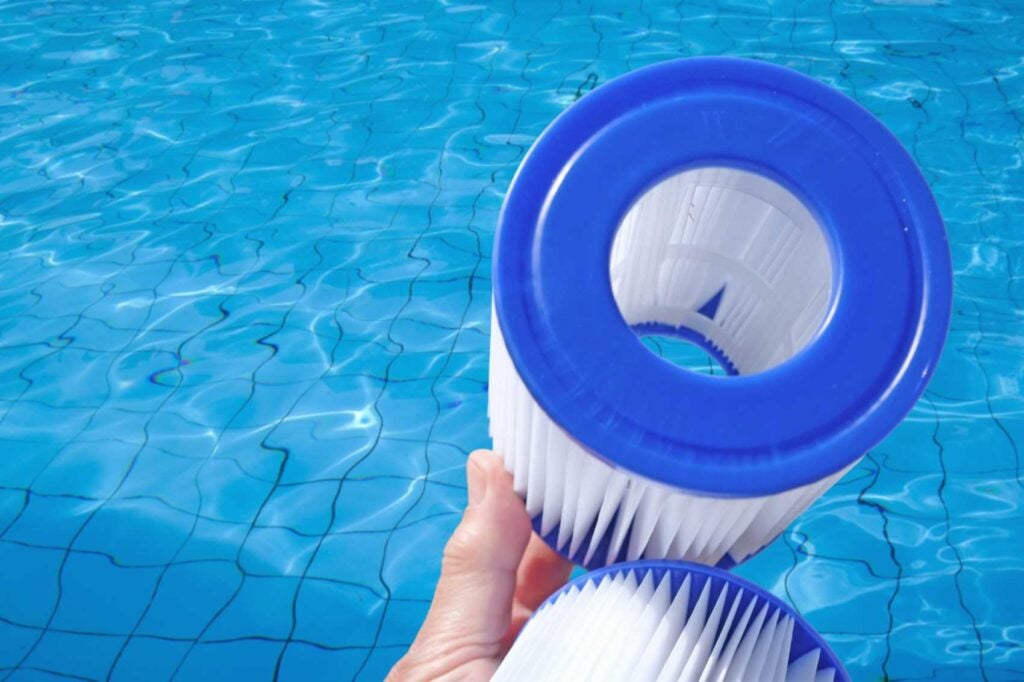
Cleaning and Maintaining Your Pool Filters
Maintaining a clean and safe swimming pool is essential for enjoying your backyard oasis. A key part of this upkeep is ensuring your pool filter is clean and functioning correctly. But how often should you clean your pool filter? The answer depends on a few factors, but regular maintenance is non-negotiable for pristine water.
A dirty pool filter can’t effectively remove contaminants, leading to cloudy water, algae growth, and an unsafe swimming environment. Let’s explore the recommended frequency for pool filter cleaning and what you need to know to keep your pool sparkling.
Why Your Pool Filter Gets Dirty
Several factors influence how quickly your filter accumulates debris. Understanding these can help you know when to clean your pool filter.
- Pool Usage: The more people who use your pool, the more sunscreen, oils, and other contaminants are introduced into the water, putting a greater load on your filter.
- Environment: In Salt Lake City, dust, pollen, leaves from nearby trees, and even runoff from rain can clog your filter.
- Weather: Storms can introduce significant amounts of dirt and debris into your pool in a short time.
- Water Chemistry: Unbalanced chemicals can lead to algae blooms, which quickly overwhelm a filter.
Cleaning Guidelines for Different Pool Filters
There are three main types of pool filters, and each has unique cleaning requirements. The most reliable indicator for cleaning any filter type is the pressure gauge. When the pressure reads 8-10 PSI (pounds per square inch) above its normal “clean” level, it’s time for a cleaning.
Sand Filters
Sand filters are popular for their durability and low maintenance. They use a special grade of sand to trap dirt and debris.
- When to Clean: Backwash your sand filter every 4-6 weeks during the swimming season, or whenever the pressure gauge is 8-10 PSI above its baseline.
- How to Clean: The process, called backwashing, reverses the water flow through the filter, flushing the trapped debris out to waste.
Cartridge Filters
Cartridge filters use a pleated fabric cartridge to screen out particles. They offer fine filtration but require more hands-on cleaning.
- When to Clean: These filters should be cleaned every 2-6 weeks, depending on your pool’s size and usage, or when the pressure gauge indicates it’s time.
- How to Clean: Turn off the pump, remove the cartridges, and rinse them thoroughly with a garden hose. For a deeper clean, soak them in a specialized filter cleaning solution to remove oils and stubborn buildup.
Diatomaceous Earth (D.E.) Filters
D.E. filters provide the highest level of filtration by using a powder made from fossilized diatoms.
- When to Clean: Like sand filters, D.E. filters are cleaned by backwashing when the pressure is 8-10 PSI above normal. After backwashing, you must add new D.E. powder to the system.
- Annual Maintenance: The filter grids inside a D.E. filter should be removed and thoroughly cleaned at least once a year to maintain peak performance.
Our Swimming Pool Maintenance Services
At Deep Blue Pool and Spas, we take the hassle out of swimming pool maintenance so you can focus on enjoying your pool to the fullest. With over 20 years of experience serving Salt Lake City, UT, we’ve built a reputation for excellence in pool care. Our skilled team ensures your pool stays pristine and operates at peak performance all year round.
We offer comprehensive maintenance services tailored to meet your specific needs. Whether routine cleaning, chemical balancing, equipment inspections, or repairs, we handle it all with precision and care. Our technicians have the expertise and tools to manage pools of all sizes and types, allowing us to address even the most complex maintenance tasks. For customers who lack the time or resources to maintain their pools, our services provide a reliable and efficient solution.
Don’t Let a Dirty Pool Filter Ruin Your Fun
Regularly cleaning pool filters is crucial for water clarity, safety, and the longevity of your pool equipment. A clogged filter puts extra strain on your pool pump, which can lead to expensive repairs and higher energy bills. By staying on top of this essential task, you ensure your pool remains a healthy and enjoyable retreat for your family and friends.
Feeling overwhelmed by pool maintenance? The experts at Deep Blue Pool and Spas are here to help. Each of our team members is a certified professional with the knowledge to handle all your pool and spa needs. Whether you need help with filter cleaning or dream of building a new backyard paradise, we provide the expertise to make your investment worthwhile. Contact us today for a free estimate and let us keep your Salt Lake City pool in perfect condition.
-
Freeform Inground Pool Design Ideas
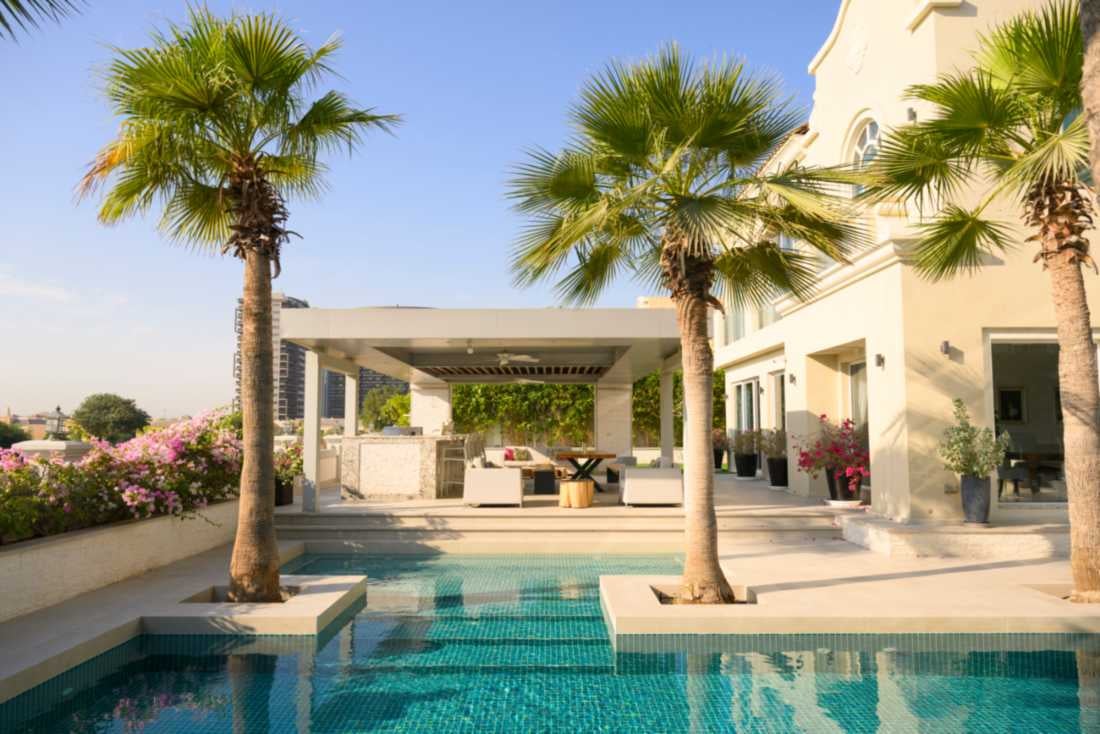
Freeform Inground Pool Design Ideas for Your Backyards
A freeform inground pool offers a refreshing escape from the structured lines of everyday life, blending seamlessly with your natural landscape. Unlike traditional geometric pools, freeform swimming pools use curves and flowing lines to create a personal oasis right in your backyard. For homeowners in Salt Lake City, this style provides an opportunity to craft a unique retreat that reflects your personal taste and complements the surrounding beauty.
Exploring freeform pool design ideas is the first step toward building your dream backyard. These versatile inground pool styles can be adapted to fit any space, creating anything from a serene lagoon to a modern entertainment hub. Let’s dive into some popular concepts to inspire your project.
Inspiring Freeform Pool Designs
Tropical Paradise
Transform your backyard into a lush, tropical getaway. This design focuses on creating an immersive natural environment around your pool.
- Landscaping: Use a mix of hardy local plants and evergreens to create a sense of seclusion and natural beauty.
- Water Features: Incorporate a rock waterfall or grotto to mimic the sounds of a jungle spring.
- Materials: Natural stone coping and a darker plaster finish can make the water look like a deep, inviting oasis.
Lagoon-Style Elegance
A lagoon-style pool aims to replicate the look and feel of a secluded natural body of water. It’s one of the most popular freeform inground pools for its organic and tranquil appearance.
- Beach Entry: A gently sloping “beach entry” provides easy access and a perfect spot for lounging in shallow water.
- Rock Formations: Strategically placed boulders and rocks around the pool’s edge enhance the natural aesthetic.
- Pebble Finish: An interior finish with natural pebbles gives the water a beautiful, textured look.
Infinity Edge Serenity
An infinity edge adds a touch of pure luxury for properties with a view. This design creates a stunning visual effect where the pool water merges with the horizon. While often associated with geometric pools, a modern freeform pool with an infinity edge offers a unique combination of soft curves and breathtaking vistas.
Modern Oasis
Freeform doesn’t have to mean rustic. A modern freeform pool uses clean, sweeping curves and minimalist features to create a sophisticated and stylish space.
- Simple Shapes: Focus on large, graceful arcs rather than tight, complex curves.
- Sleek Materials: Use light-colored decking like concrete pavers or travertine for a clean, contemporary look.
- Integrated Features: For a high-tech touch, add features like sheer descent waterfalls, in-pool LED lighting, and an automated control system.
Mediterranean Retreat
Capture the timeless charm of a European villa with a Mediterranean-inspired design. This style is warm, inviting, and effortlessly elegant.
- Decking: Travertine or terracotta pavers provide the classic, sun-drenched look of a Mediterranean courtyard.
- Waterline Tile: Use vibrant blue or patterned mosaic tiles at the waterline for a pop of color and character.
- Water Features: Consider adding classic scuppers or arched wall fountains for an authentic touch.
Eco-Friendly Haven
For the environmentally conscious homeowner, an eco-friendly design minimizes environmental impact without sacrificing beauty.
- Efficient Equipment: Use variable-speed pumps and energy-efficient heaters to reduce power consumption.
- Natural Filtration: Explore options like saline systems, which reduce the need for harsh chemicals.
- Sustainable Landscaping: Surround your pool with native, drought-resistant plants to conserve water and support the local ecosystem.
Entertainment Central
Turn your pool area into the ultimate destination for family and friends. A freeform design is perfect for creating different “zones” for various activities.
- Swim-Up Bar: Integrate a bar with in-water seating for a resort-like experience.
- Outdoor Kitchen: Build a nearby outdoor kitchen or BBQ area for easy poolside dining.
- Sun Shelf: Include a large, shallow tanning ledge (or sun shelf) for lounging and playing.
- Cozy Fire Pit: Add a fire pit adjacent to the pool for a gathering spot that can be enjoyed day and night.
Build Your Perfect Backyard Oasis with Deep Blue Pool and Spas
Choosing the right freeform pool design is an exciting process, and you don’t have to do it alone. At Deep Blue Pool and Spas, our certified swimming pool builders have the expertise to bring your vision to life. We work with you from the initial design to the final installation, ensuring every detail is perfect. Let us help you create an investment your family will enjoy for years. Contact us today for a free estimate and start planning the pool of your dreams.
-
How Often Should You Clean Your Pool Filter?
The Ultimate Pool Filter Cleaning Guide
The thrill of owning a swimming pool often overshadows the responsibilities that come with it. While pools offer countless benefits, they also require consistent upkeep, including regular pool filter cleaning. To help you stay on top of maintenance, Deep Blue Pool and Spas is here to guide you through when and how to clean pool filters.
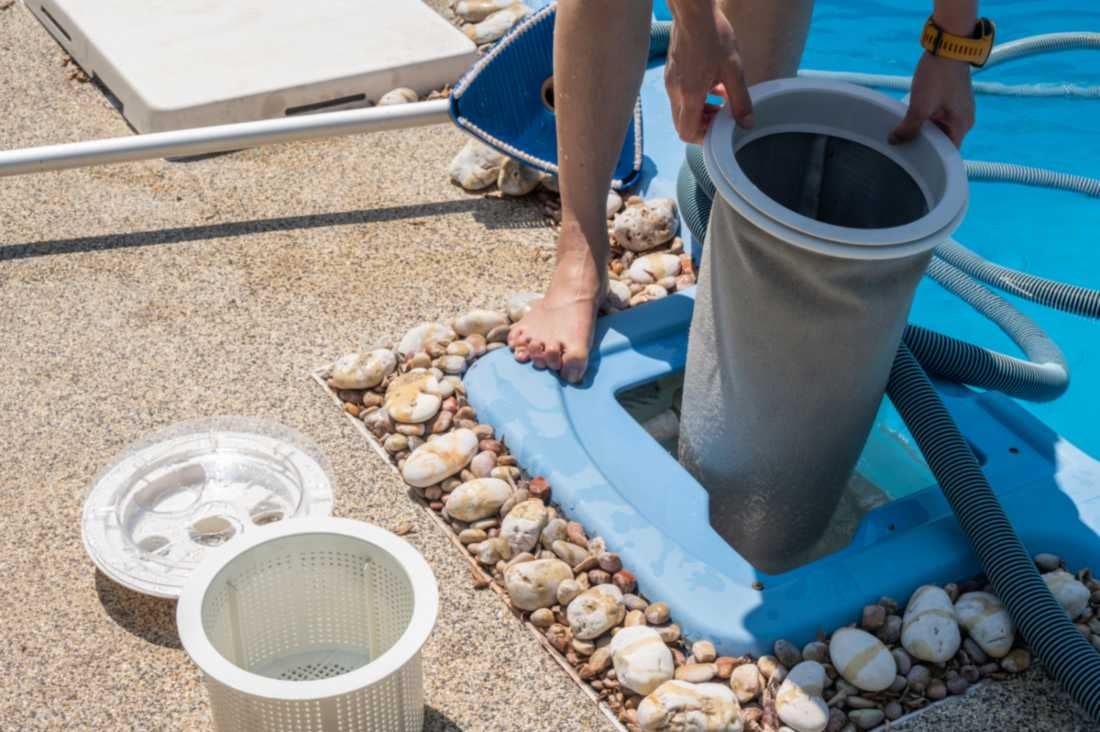
The Role of Your Pool Filter
The filtration system plays an integral role in any swimming pool’s performance, cleanliness, and integrity. These systems circulate the water to collect and eradicate debris and contaminants that may otherwise compromise your pool. Pool filters play a crucial role in maintaining clear water and a clean swimming environment.
The Importance of Pool Filter Cleaning
Pool filters are essential for keeping your pool water clear and clean. Over time, dirt, algae, and other debris accumulate in the filter, which can lead to unsanitary conditions and contamination. If not addressed, this buildup can cause serious issues, such as repairs and premature replacements.
The Risks of Overlooking Pool Filter Cleaning
At Deep Blue Pool and Spas, we encourage pool owners to get proactive about their pool filter cleaning. Failing to prioritize this essential task can lead to costly complications, including:
- Insufficient water circulation
- Unnecessary pool pump strain
- Cloudy or contaminated pool water
- Increased risk of premature system failures
What Is the Recommended Frequency for Pool Filter Cleaning?
Determining how often you need pool filter cleaning isn’t as straightforward as it might seem. The ideal cleaning schedule varies based on the type of filtration system you’re using, as each system has unique maintenance requirements and tolerances for debris buildup. Pool filtration systems come in three forms, including:
- Sand filters
- Cartridge filters
- Diatomaceous earth (DE) filters
How Often to Clean Sand Filters
Sand filters are the least labor-intensive, requiring less upkeep than alternative options. Sand filters should be cleaned when the pressure gauge is 8-10 psi above the clean pressure standard. However, depending on the filter media, pool environment, and subsequent maintenance, sand filters may only require a thorough cleaning every three to five years.
How Often to Clean Pool Filter Cartridges
The size of the cartridge influences the frequency of cartridge filter cleaning. In alignment with best industry practices, size-specific cartridge cleaning guidelines include:
- Small cartridge filters: Three to four week cleaning intervals
- Medium cartridge filters: Weekly or biweekly cleaning intervals based on pool usage
- Large cartridge filters: Three to four month cleaning intervals
How Often to Clean Diatomaceous Earth Filters
DE filters mirror the cleaning specifications of large cartridge filters. On average, these systems should be cleaned every three to four months. However, this timeline may vary depending on the integrity of the pool environment and the usage frequency.
Satisfying Your Pool Filter Cleaning Needs
An effective pool filter cleaning schedule depends not just on timing but also on proper cleaning techniques. Like maintenance schedules, cleaning methods vary depending on the type of filter you have. Deep Blue Pool and Spas is here to provide expert guidance on the best filter maintenance practices, helping you avoid guesswork and reduce the risk of potential damage.
How to Clean a Pool Filter
To clean a cartridge filter, remove and rinse the cartridge using a hose and/or soak it in a filter-safe cleaning agent. As DE and sand filters rely on filter grids, they should be backwashed to flush out debris and rinsed. DE filters must also be replenished with new DE powder after cleaning.
Effective Pool Filter Cleaning Strategies
With the right techniques, pool filter cleaning can be prompt and efficient. To improve the outcome of routine pool maintenance, adopt the following practices:
- Invest in a filter-specific cleaner to achieve unrivaled results
- Allow the filter to dry before putting it back
- Inspect and lubricate gaskets and O-rings as needed
- Avoid damage by adhering to manufacturer guidelines
Pool Filter Cleaning Made Easy With Deep Blue Pool and Spas
Pool filter cleaning isn’t complicated, but it can be time-consuming for those with busy schedules. Simplify your pool maintenance routine by leaving your filter maintenance to the experts at Deep Blue Pool and Spas. Contact us today to learn more about our pool care services.
-
Upgrading Your Pool: Equipment and Cosmetic Options
The Ultimate Guide to Pool Upgrades
Swimming pools are undeniable assets. However, to maximize the value of these investments, it’s crucial to stay up-to-date with the latest functional equipment, accessories, and cosmetic enhancements. Deep Blue Pool and Spas is here to showcase the top pool upgrades that can enhance both the enjoyment and aesthetic appeal of your aquatic oasis.
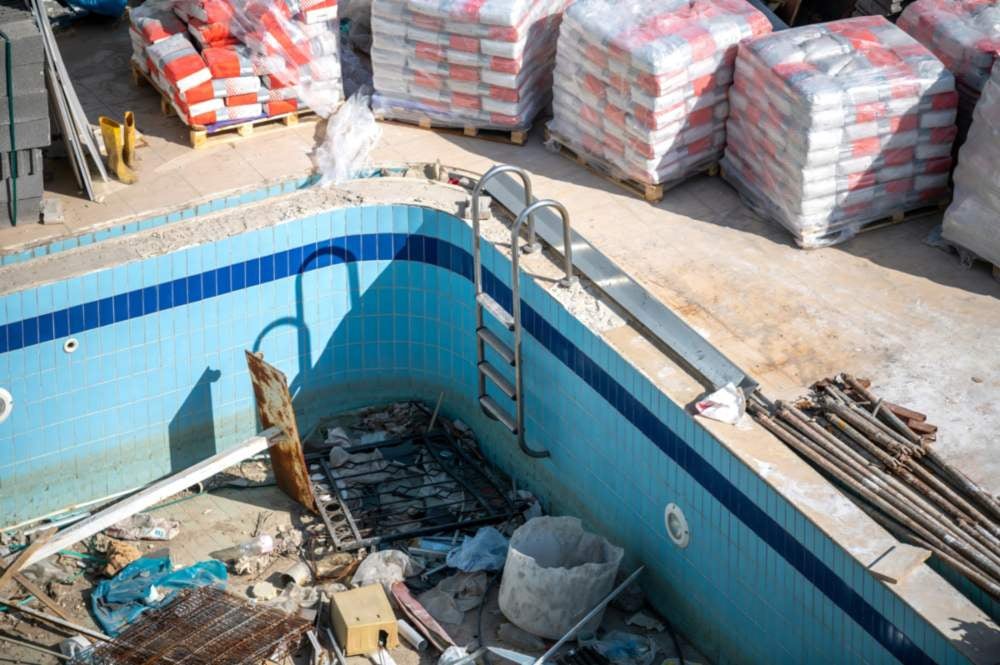
Understanding Different Types of Swimming Pool Upgrades
Most pool companies, including Deep Blue Pool and Spas, offer two types of pool upgrades. Functional upgrades refer to your pool equipment set-up. These products are geared toward more efficient pool system performance. In contrast, cosmetic upgrades are modifications that may contribute to your investment’s functionality and aesthetic appeal.
When to Consider Pool Upgrades
Pool upgrades aren’t just necessary when existing features break down; they’re an excellent way to enhance and preserve the long-term integrity of your pool. By proactively choosing pool upgrades, you’re helping to maintain its efficiency, safety, and appearance. These upgrades can range from adding energy-efficient equipment to improving aesthetics with stylish features. Not only do they elevate the overall functionality of your pool, but they can also increase the value of your property.
The Benefits of Pool Upgrades
Pool upgrades can transform the form and function of your pool. Key benefits of these features may include:
- Optimized energy efficiency and lower utility costs
- Improved pool system performance
- Reduced maintenance and/or cleaning demands
- Sustainable cost-savings
- Greater pool safety
- Increased property value
- Maximized visual appeal
- Versatile and entirely customizable
Pool Equipment & Set-Up Upgrades
Endless pool upgrade ideas are available for homeowners seeking the latest in-ground and above-ground pool upgrades. Modern pool equipment set-ups offer limitless possibilities, from energy-efficient, variable-speed pumps to automated pool covers. To help you make the best choice for your needs, Deep Blue Pool and Spas is here to highlight the industry’s top equipment upgrades.
Energy-Efficient Pool Systems
If energy- and cost-savings are your primary priorities, it may be time to transition toward an energy-efficient pool system. We recommend investing in a variable-speed pump complete with adjustable flow rates and convenient automation features to eliminate excess energy consumption and the noise associated with conventional single-speed pool pumps.
Pool Automation Features
Pool automation is the latest in aquatic enjoyment and maintenance. With an endless selection of automated features, pool automation allows homeowners to control virtually every facet of their swimming pool experience via their preferred smart device. Depending on your objectives, this may include automated pool covers, filters, heaters, lighting, and more.
Modern Pool Heating Systems
Pool owners in regions prone to sudden temperature drops no longer need to rely on outdated, energy-intensive heating systems. Embracing the power of automation, it is now possible to unlock remote temperature control capabilities when you upgrade to a modern pool heating system, complete with smart integration and advanced automation features.
Cosmetic Pool Upgrades
Cosmetic pool upgrades focus on enhancing the visual appeal of your pool, but the benefits go beyond just improved aesthetics and increased property value. These upgrades can also serve as practical investments, boosting the performance and efficiency of your pool. For instance, upgrading to energy-efficient lighting or a more advanced filtration system not only adds to the beauty of your pool but also lowers energy costs and improves water quality. Adding features like upgraded decking, water features, or a stylish poolside lounge area can enhance both the look and functionality of your outdoor space.
Striking LED Lighting Enhancements
Transform your pool into a captivating, aquatic oasis with striking LED lighting upgrades. Blending energy-efficient engineering and remote-control automation, LED lighting enhancements are the perfect way to boost the ambiance of your outdoor living space while also cutting back on utility expenses.
Pool Resurfacing & Tile Upgrades
A properly installed swimming pool can last for decades. However, even if its performance keeps up with the latest industry advancements, its appearance may not reflect modern trends. To refresh your backyard without committing to invasive overhauls, consider pool resurfacing, tile upgrades, and/or a modern pool finish.
Maximize the Value of Your Investment With Pool Upgrades
Don’t settle for an inefficient, outdated, or unsightly swimming pool. Achieve the luxurious, high-performance oasis you’ve been dreaming of with Deep Blue Pool and Spas’ selection of modern pool upgrades. Contact us today to learn more about how we can enhance your pool ownership experience.
-
Why is My Pool Water Green?
What Does It Tell You When the Water Is Green in Your Pool?
Nothing ruins the allure of your backyard oasis faster than the sight of green pool water. It’s not just an eyesore; it’s a sign that your pool needs attention. Whether it’s algae growth, chemical imbalances, or improper maintenance causing the problem, restoring your pool might feel overwhelming. Deep Blue Pool and Spas is here to help. With expert guidance on the essentials of green pool cleaning, we’ll provide you with the knowledge and tools needed to address the issue effectively. From diagnosing the root cause to implementing solutions, we’ll help you restore and maintain your pool’s crystal-clear beauty with confidence.
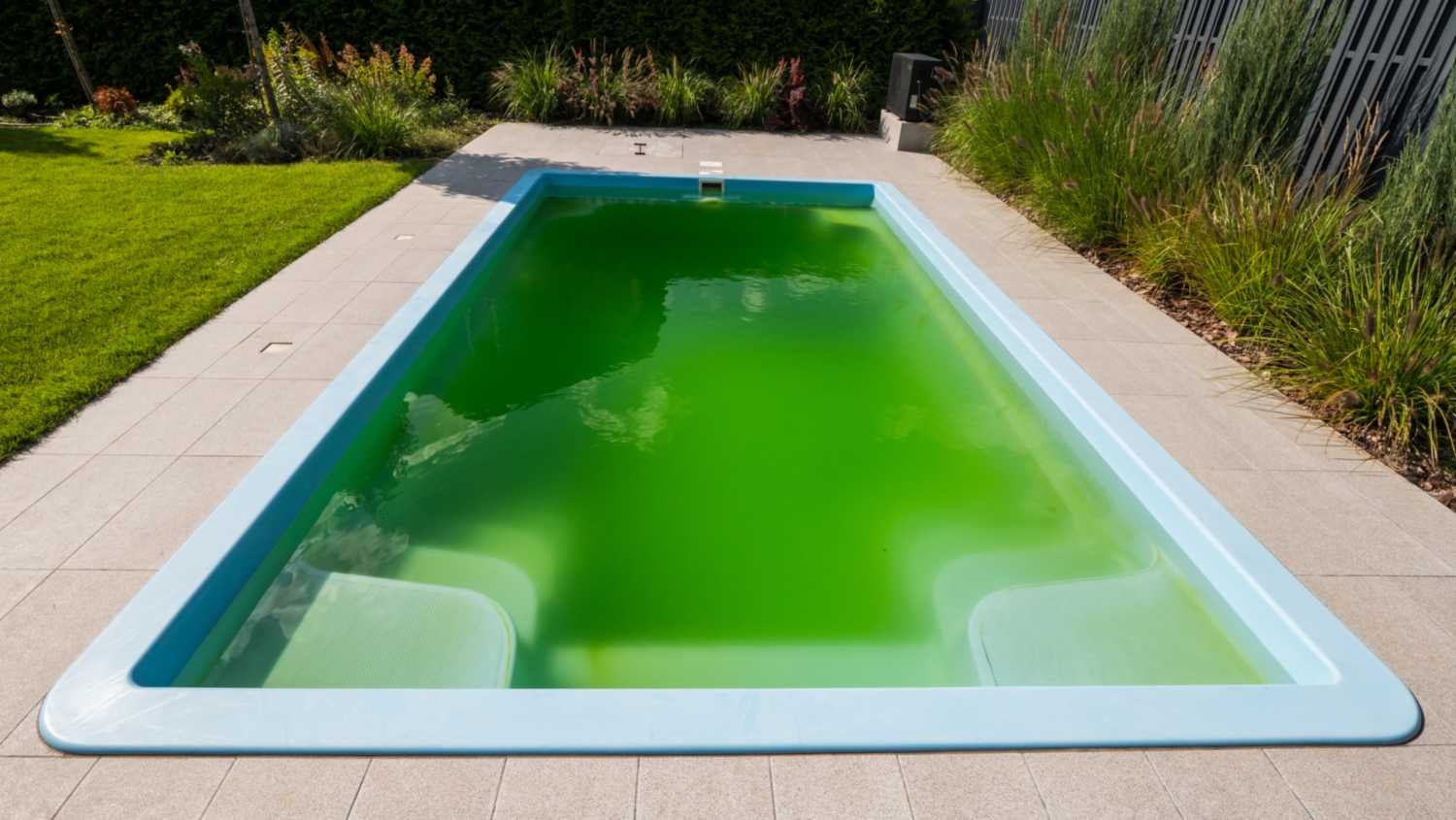
Why Does Pool Water Turn Green?
Before tackling green pool cleaning, it’s crucial to understand what murky or discolored water really means. Green water is often a sign of algae growth and insufficient maintenance. However, the issue can be more complex, requiring a closer look at potential missteps in your pool care routine to pinpoint the cause and find the right solution.
Lack of Maintenance
Crystal-clear waters are the result of consistent and proactive maintenance. Routine skimming, brushing, and vacuuming are non-negotiable to achieve and sustain a dazzling pool. Neglecting these essential cleaning tasks can create the perfect conditions for algae growth, resulting in the unsightly green water every pool owner wants to avoid.
Imbalanced Pool Chemicals
Chlorine and pH levels play an instrumental role in maintaining your pool’s hygiene, health, and overall appeal. Misjudging chlorine levels or neglecting regular adjustments can create an ideal breeding ground for aquatic organisms. Left unchecked, this can quickly lead to algae growth.
Solely Relying on Chlorine
While chlorine plays a vital role, it’s not the sole solution for maintaining a clean pool. Truly effective pool care and algae prevention require a comprehensive approach beyond this common chemical. At Deep Blue Pool and Spas, we encourage pool owners to incorporate a weekly algae inhibitor or suppressant treatment into their maintenance plans.
Compromised Filtration Systems
The integrity of your pool’s filtration system is directly linked to the color of your pool water. When a filtration system starts to fail, water circulation slows, allowing debris to accumulate. This debris often includes organic matter like leaves, which provide the nutrients algae need to flourish.
Factors That Influence Algae Growth
In addition to improper maintenance and chemical imbalances, several other factors can contribute to the growth of algae. These factors include:
- Excess heat and sun exposure
- Insufficient water circulation and/or filtration
- Organic matter and debris that double as algae nutrient sources
- Elevated phosphate levels and/or nitrates
Is It Safe to Swim in a Green Pool?
We advise pool owners to steer clear of green water. Even moderate discoloration can indicate water contamination, elevating the risk of coming in contact with various bacteria and pathogens which can lead to infections. Moreover, algae creates a dangerous environment by obstructing visibility and making the pool slippery.
How to Avoid Green Pool Water
Although problematic, green pool water is almost entirely avoidable. Maintain sparkling waters by prioritizing proactive maintenance. At Deep Blue Pool and Spas, we recommend:
- Routine pool cleanings, including skimming, brushing, and vacuuming
- Periodic chemical testing and balancing
- Weekly algae suppressants/inhibitors
- Professional pool maintenance services
Green Pool Cleaning
Once you’ve answered the question, “Why is my pool water green?” it’s time to take action. To restore the clarity and hygiene of your pool, employ the following:
- Water chemistry testing and balancing
- Chlorine shock treatment to eradicate existing algae
- Brush the pool walls/floor
- Leave the pool filter running for up to 48 hours
- Vacuum the pool
- Re-evaluate water chemistry
Learn More About Green Pool Cleaning Today
Say goodbye to discolored water and unwanted algae growth with the help of Deep Blue Pool and Spas. We offer expert guidance on everything from simple preventative care to professional cleaning and maintenance services, ensuring that your pool stays in top condition year-round. Our team is dedicated to making pool care easy, helping you avoid common pitfalls that lead to green, murky water. Contact our friendly team to learn more today.
-
Top Trends in Pool Installation for 2018
Whether you’re considering a brand new swimming pool installation in Salt Lake City or simply want to upgrade your existing pool, there are several trends you can embrace in 2018. Consider giving your pool modern appeal with these features that are sure to be favorites this year.
Hydrotherapy Jets
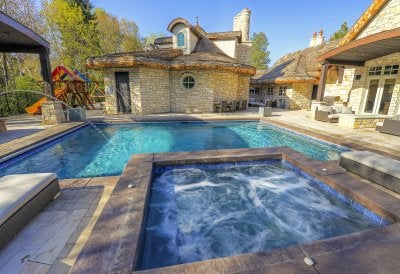
With hydrotherapy jets, you get to combine the benefits of having an in-ground swimming pool in your backyard with the spa-like health features of a hot tub. By including hydrotherapy jets in your pool installation, you can turn your pool into the perfect location for a healing soak. The pressure of the jets helps to ease aching muscles and joints and are perfect for controlling arthritis symptoms or recovering from a tough workout. If your pool is heated, the jets can be even more soothing, as the warm water can further relax your muscles and joints.
LED Lighting
LED lighting has both aesthetic and functional benefits. Because the lights are available in a variety of colors and sizes, you can use them to highlight your pool as part of your landscaping and to set the perfect mood for nighttime swimming. Swimming pool lighting also makes it safer to swim after dark and navigate your pool deck area. LED lighting is much more energy-efficient than traditional lighting, so you’ll save money on your energy bill. This kind of lighting is also inexpensive to install, so talk to your pool contractor about adding it to your swimming area.
Automation
Home automation continues to be a top trend, and there’s no reason to leave your pool out of these smart home upgrades. There are a number of ways you can add automation to your swimming pool, from automated pool covers to heating systems and cleaners. These features allow you to manage your routine pool maintenance right from your smart phone. As home automation tools continue to expand, expect to see new automation features for your pool become available. -
How Often Should I Replace the Pool Water?
Even with an effective pool filtration system, you will want to periodically replace the water as part of your pool maintenance plan. Your pool contractor in Salt Lake City can tell you how often the water should be replaced in your pool, based on the manufacturer’s recommendations and how often you plan to use the pool.
Generally, pool water needs to be replaced once every five to seven years. This should be done during mild weather so that your pool surface is not at risk from strong sunlight and heat. Your pool maintenance company can recommend when it is time to drain your pool. Keep in mind that you can minimize the number of times your pool needs to be drained by sticking to a regular swimming pool maintenance schedule, which will help to control the levels of potentially damaging elements in your pool water. Because pool drainage can be complex and doing so at the wrong time can damage the pool, it’s generally best to allow your pool maintenance company to perform the task for you.
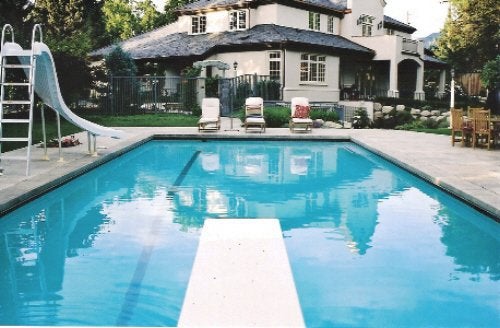
-
Quick Tips for Adding Chemicals to a Hot Tub
After your hot tub installation in Salt Lake City , adding chemicals to it regularly will help to ensure that you can continue to enjoy it for many years to come. To learn the right way to add chemicals to your hot tub, watch this video.
To add chemicals, make sure your jets are turned on. Measure the chemicals you are adding and sprinkle them across the surface of the water. The jets will help spread the chemicals through the water. Leave the jets running with the hot tub cover off for about 15 minutes to make sure that the chemicals are appropriately distributed throughout the water.
-
Essential Steps in Caring for Your Solid Pool Cover
After your pool installation in Salt Lake City, using your pool cover the right way will protect your investment. As you need regular swimming pool maintenance , your cover will also need some special attention now and then to ensure that it stays in good condition and protects your pool properly. If you have a sold pool cover, follow these steps to care for it.
Spot Check Your Water Line
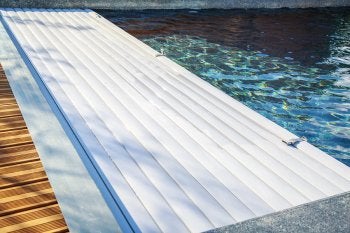
Your water line is important to more than your skimming system. If there is heavy debris on the surface of your solid cover, such as snow, water from heavy rains, or limbs, and the water line is so low that it doesn’t support your cover from underneath, then your pool cover can become damaged or wear out sooner than it otherwise would. When your pool is not in use for long periods of time, periodically perform water level checks to prevent excessive stain on your pool cover.
Prevent Chemical Damage
The chemicals you put in your pool to keep the water clean and balanced could cause damage to your swimming pool cover. When you add chemicals, avoid putting the cover on for at least two hours. This will allow the chemicals to dissolve in the water and the levels to balance out. If you put your pool cover on right after treating your water, the chemicals could still be sitting on the surface of the water and damage the pool cover.
Clean Your Pool Cover
Your pool cover should be cleaned about once every three to six months. Use mild dish soap and a hose to wet the surface, and then scrub it with a pool brush. Rinse the soap off and use a cover pump on the liner to get rid any water that accumulates. If you notice any mold growth, wash the affected area with diluted bleach, being sure to rinse it off completely. You can reduce the chances of mold growth by making sure your cover is dry before storing it.
RECENT POSTS
categories
- Uncategorized
- Hot Tub Installation
- Swimming Pool Installations
- Swimming Pool Design
- In Ground Pools
- Swimming Pool Maintenance
- Swimming Pool Service
- Swimming Pool Repair
- Outdoor Fireplace
- Outdoor Fire Pit
- Pool Safety
- Deep Blue Pools and Spas
- Exercise
- Swimming
- Outdoor Kitchen
- Pool Chemicals
- Chlorine Levels
- Water Feature
- Burning Calories
- Pool Contractor
